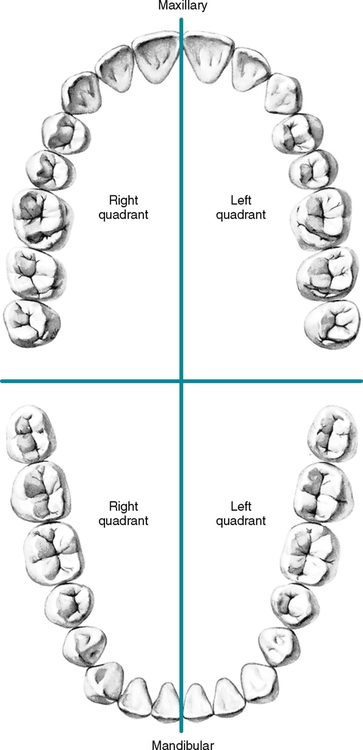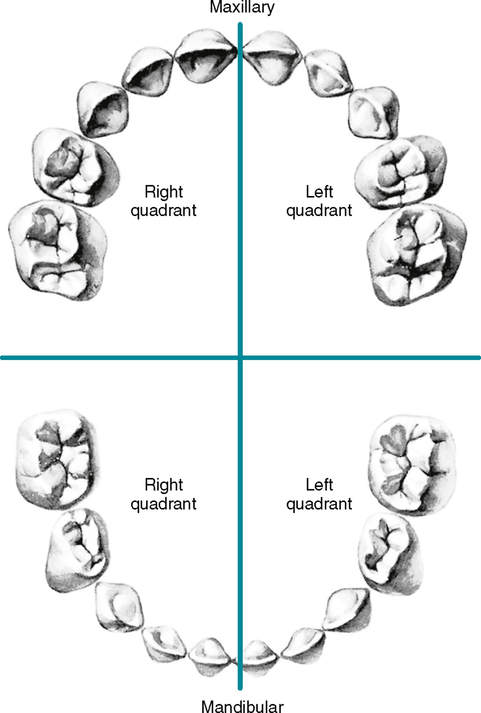Dentition
• To understand the difference between primary dentition, secondary dentition, and mixed dentition
• To understand the arrangement of the teeth into dentitions, arches, and quadrants
• To name and code any individual tooth
• To code teeth using the Universal system, the Palmer notation system, and the Federation Dentaire Internationale (FDI) system
• To identify a tooth when given a code from one of the three systems
ARRANGEMENT OF TEETH
The general arrangement of teeth is referred to as the dentition. Primary dentition refers to the 20 deciduous teeth, often called baby teeth. Secondary dentition refers to the 32 permanent teeth (Figs. 4-1 and 4-2).

NAMING AND CODING TEETH
Universal System
The Universal system uses the Arabic numerals 1 through 32 for permanent teeth and the letters A through T for the primary teeth. The number 1 is assigned to the most posterior molar on the upper right, the permanent maxillary right third molar. The highest number is given to the permanent mandibular right third molar (Fig. 4-3). Likewise, the letter A is given to the primary maxillary right second molar, and the letter T to the primary mandibular right second molar (Fig. 4-4).
Stay updated, free dental videos. Join our Telegram channel

VIDEdental - Online dental courses



